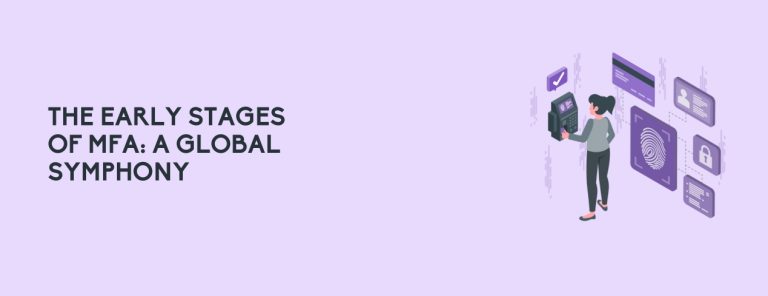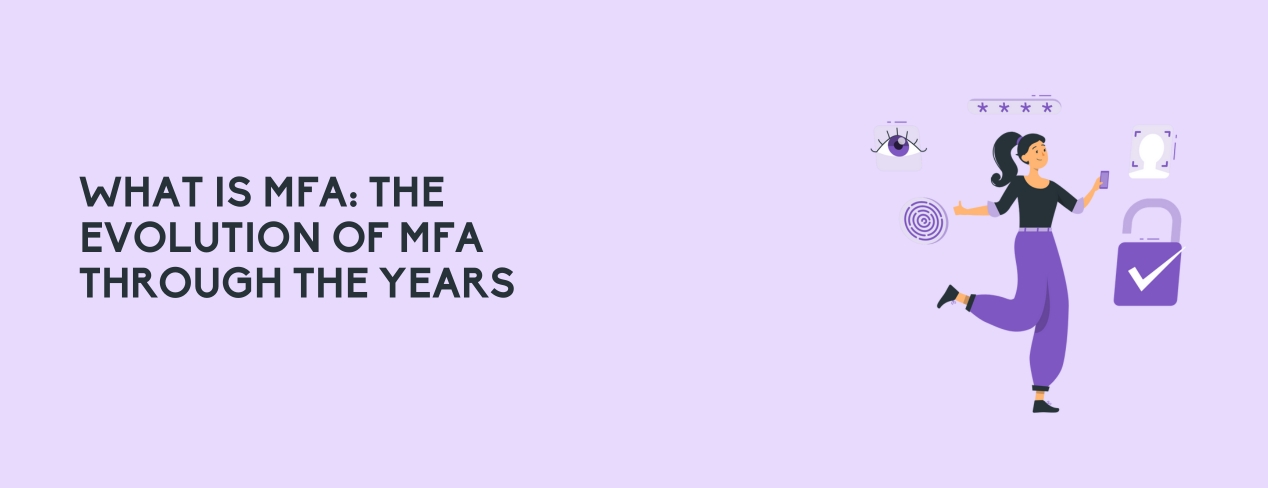MFA, or Multifactor Authentication, stands as a technological cornerstone widely recognized within the realm of cybersecurity. How did MFA get to this point globally? When did it come to become so widely accepted even here in the Philippines? Exploring it’s evolution over the years not only deepens your comprehension of this technology but also offers insights on optimal implementation strategies for your business.
The Early Stages of MFA: A Global Symphony

Inception and Pioneering Concepts
The creation of MFA was a revolutionary technology in the field of digital security. It’s pioneering concept was to focus on combining traditional passwords with additional layers of authentication. This would lay the foundation for its eventual evolution and signaling a shift in how security would be approached in the following years.
Global Adoption and Technological Advancements
As technology advanced, so did the influence of MFA on a global scale. The adoption of biometrics, smart cards, and token-based systems became integral components of it’s repertoire. This technological evolution transformed MFA into a dynamic force capable of adapting to the ever-changing threat landscape. The global community embraced MFA, acknowledging its role as a necessary tool in fortifying digital defenses against an array of cyber threats.
The global adoption of MFA reflected a collective understanding of its efficacy. The integration of advanced technologies showcased MFA’s adaptability, proving instrumental in safeguarding digital identities worldwide. Technological advancements became the driving force behind MFA’s evolution, turning it into a global standard for robust cybersecurity.
Regulatory Frameworks and Global Collaboration
Governments worldwide recognized the significance of MFA in fortifying cybersecurity. Regulatory frameworks were established to encourage its adoption, fostering global collaboration in the fight against cyber threats. It became an amazing addition to IT security, adding a resilient layer of security for organizations across nations. The regulatory support and collaborative efforts illustrated the shared commitment of the global community to strengthen digital defenses and protect sensitive information.
The Rise of MFA in the Philippines: Impact on Businesses

Early Implementations in the Philippines
The Philippines, aligning with global trends, eagerly embraced MFA in its early stages. From token-based systems to biometric solutions, businesses in the archipelago became early adopters of these advanced security measures. The Philippines’ foray into MFA reflected a commitment to staying at the forefront of digital security, acknowledging the necessity of robust measures to protect sensitive information.
Early implementations in the Philippines showcased a proactive stance toward digital security. Businesses recognized the importance of MFA in mitigating risks and ensuring a secure online environment. The initial steps taken by Filipino enterprises laid the foundation for a resilient cybersecurity infrastructure.
MFA and its Impact on Philippine Businesses
The impact of Multifactor Authentication on Philippine businesses has been transformative, shaping the landscape of digital security in the archipelago. Since its initial implementation, businesses experienced a significant reduction in unauthorized access and data breaches. MFA emerged as a cornerstone for securing sensitive information, becoming an integral aspect of the Philippine business landscape.
The integration of MFA into Philippine businesses marked a paradigm shift in cybersecurity practices. Businesses saw tangible results, with a notable decrease in security incidents. It’s impact extended beyond mere security; it became a catalyst for digital trust, enabling businesses to operate in a secure online environment.
Challenges and Collaborative Solutions
The journey was not without challenges, as businesses in the Philippines navigated the delicate balance between security and user acceptance. While the robust security measures provided by MFA were crucial, ensuring seamless user experiences posed a nuanced challenge. However, collaborative efforts between the public and private sectors in the Philippines addressed these challenges head-on. This synergy enhanced the effectiveness of MFA, creating a resilient ecosystem for businesses against evolving threats.
The challenges faced by Philippine businesses highlighted the need for a collaborative approach to cybersecurity. The public and private sectors worked in tandem, sharing knowledge and expertise to optimize it’s implementations. This collaborative effort not only addressed the challenges posed by evolving cyber threats but also fostered a sense of collective responsibility for digital security in the Philippines.
If you would like to learn more about how to better implement Multifactor Authentication to your business or find out about MFA products like RSA, you may contact us at marketing@ctlink.com.ph to set a meeting with us today!


One Response